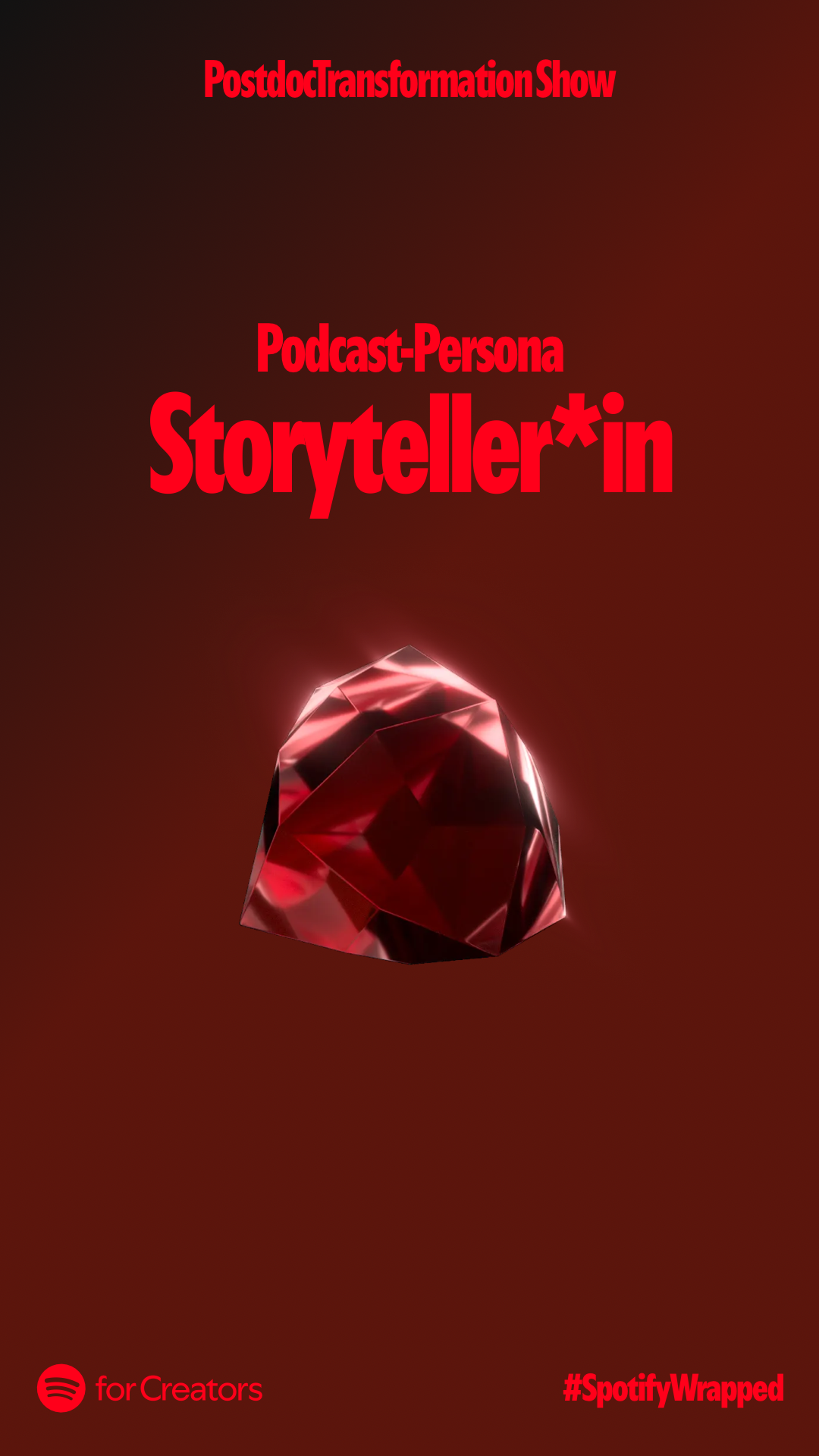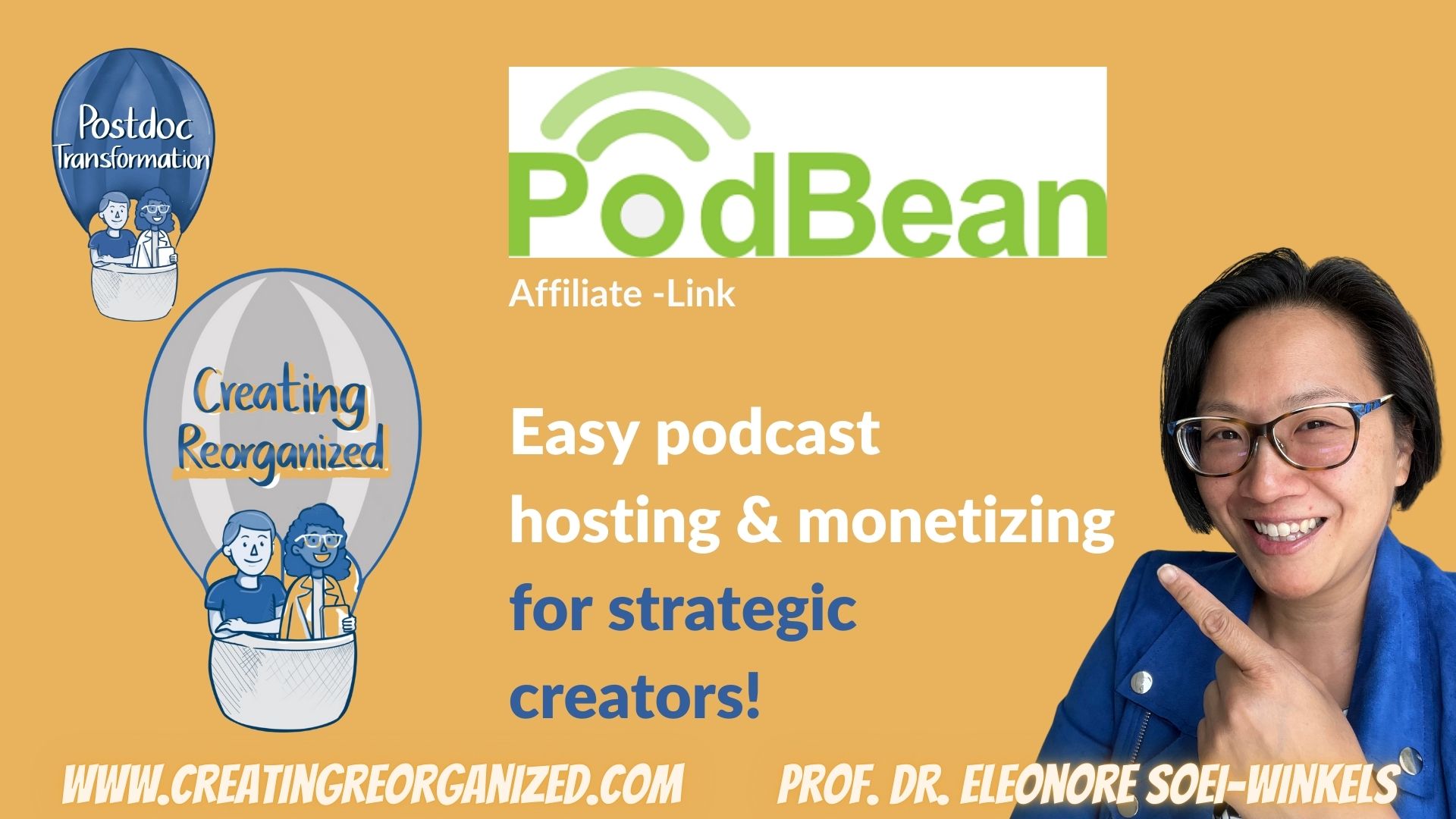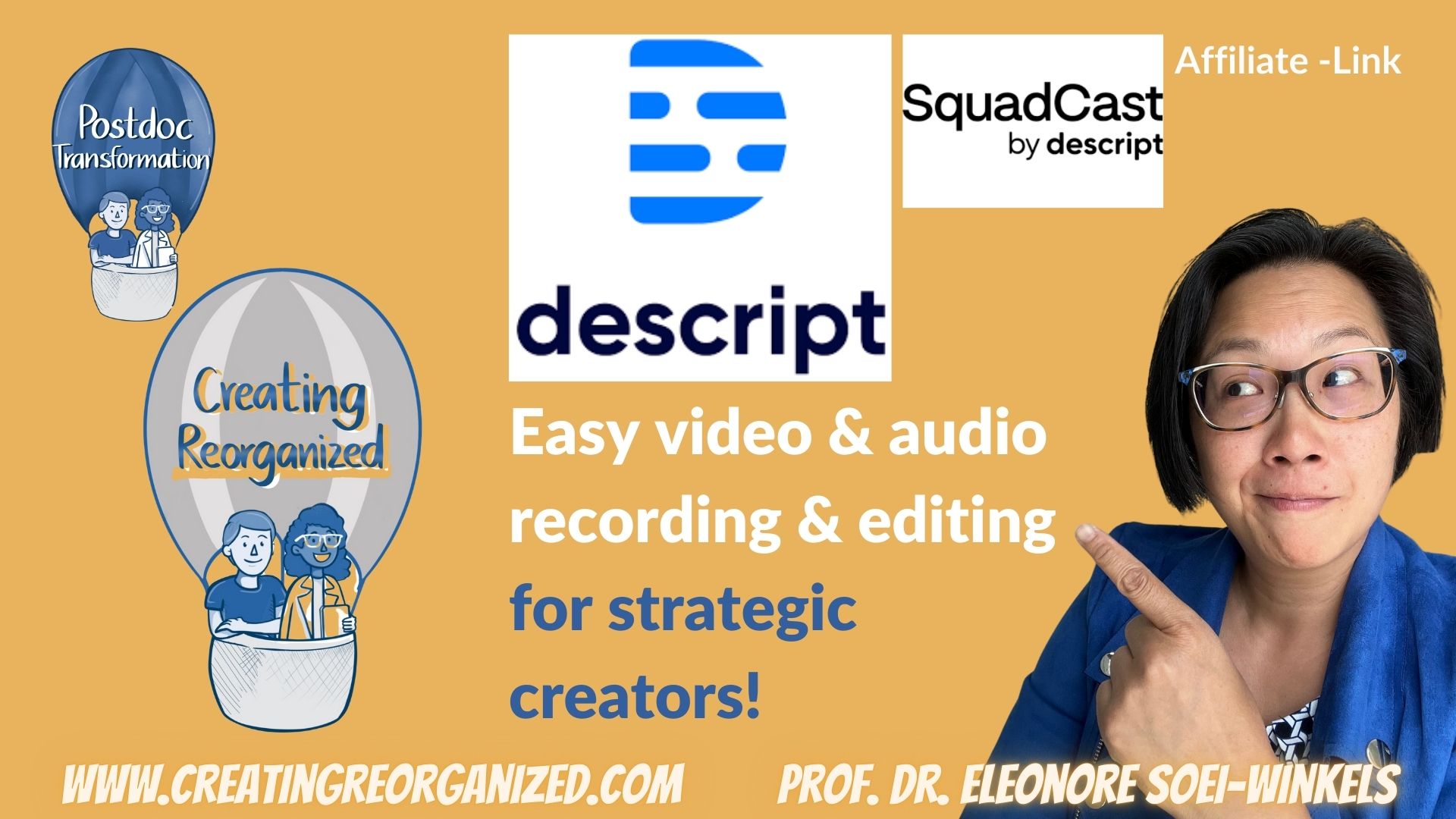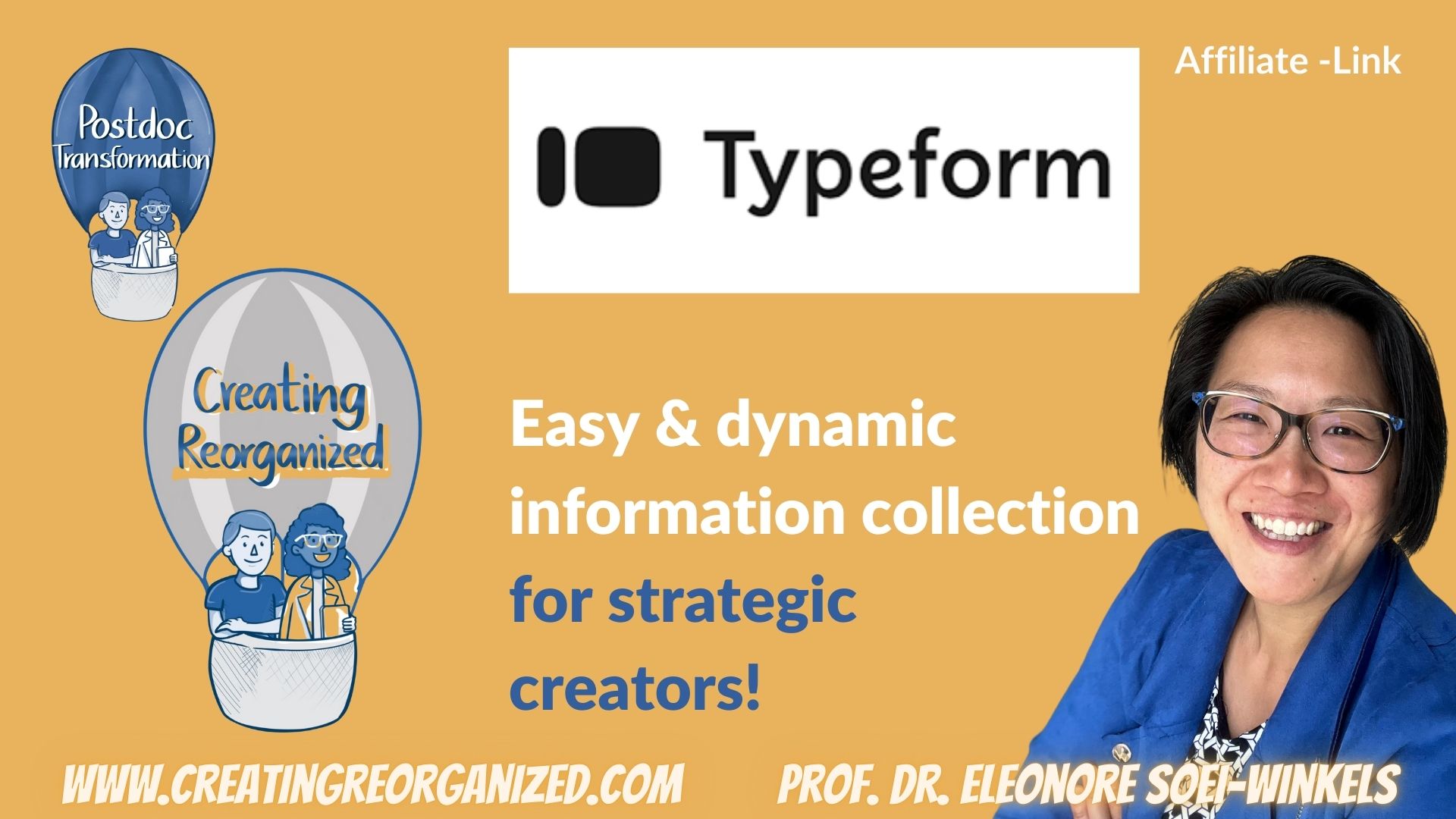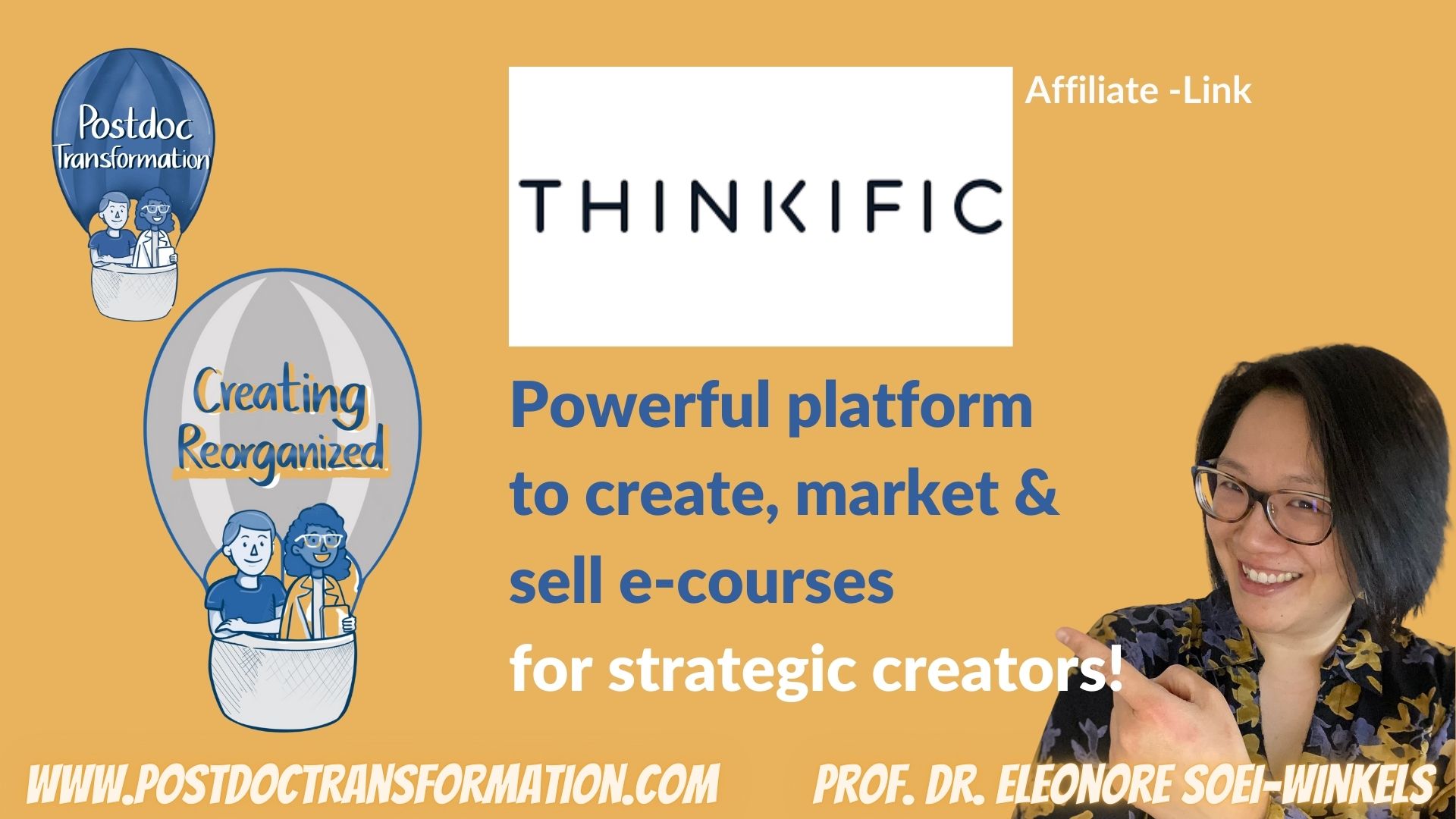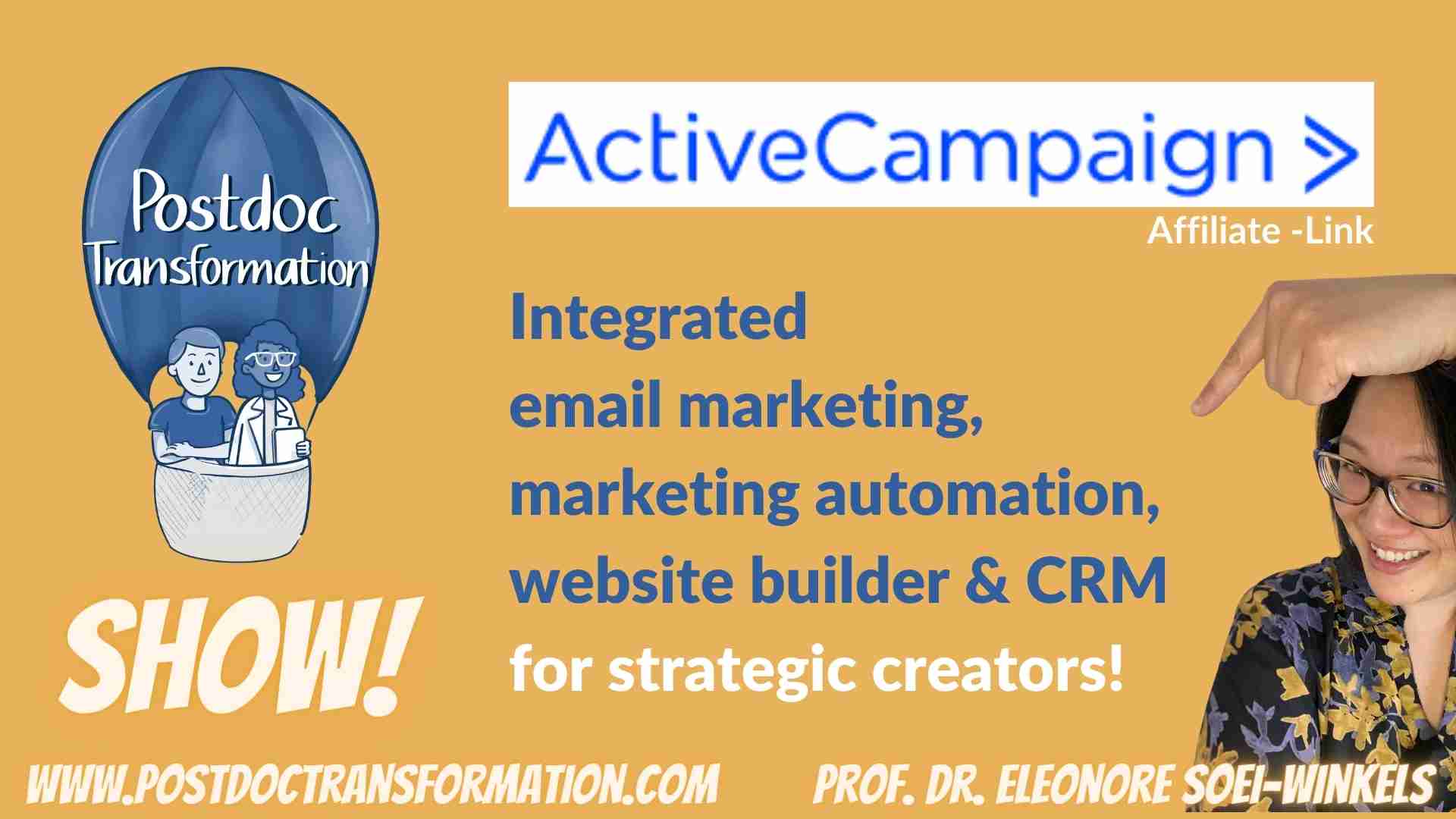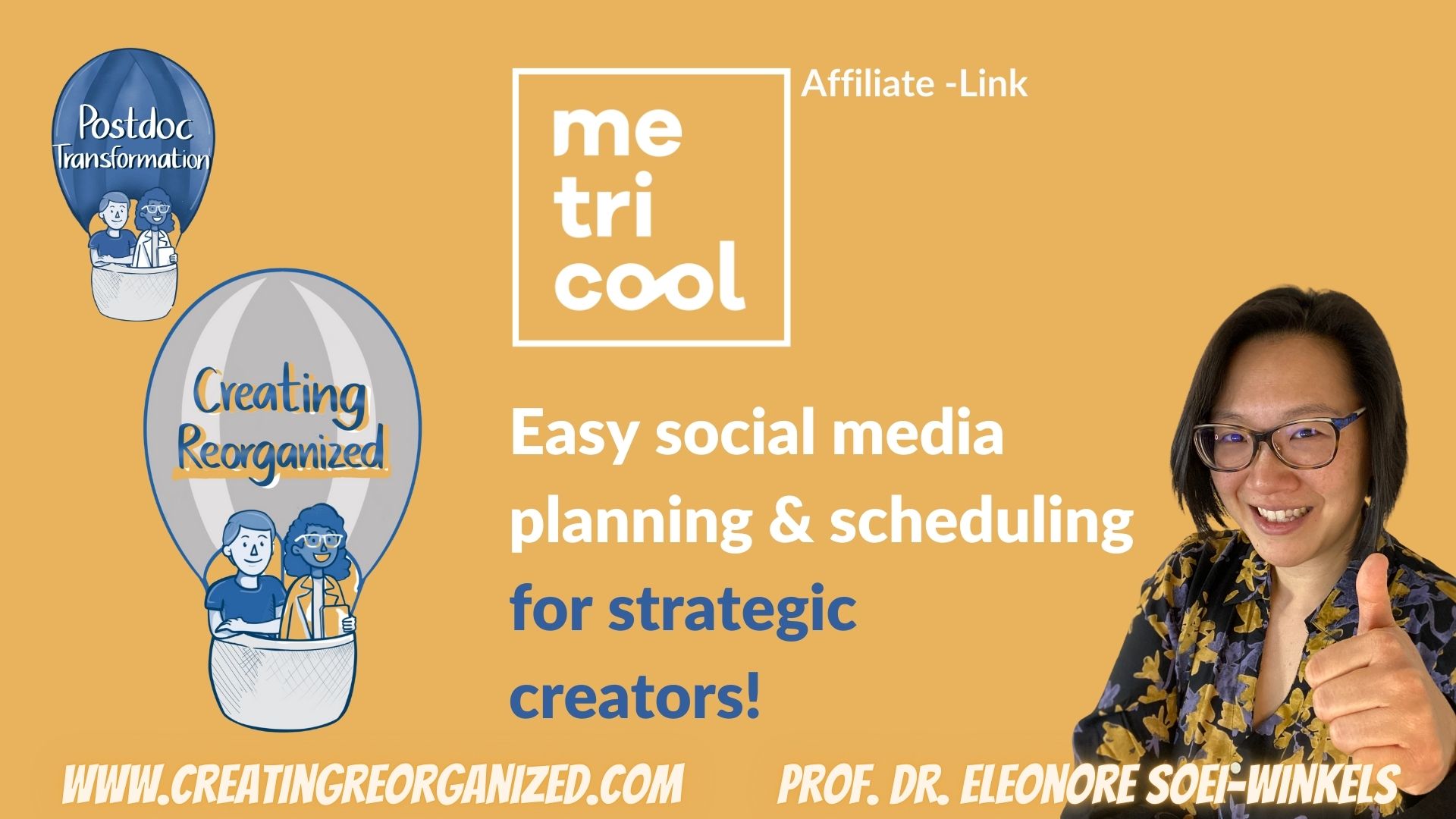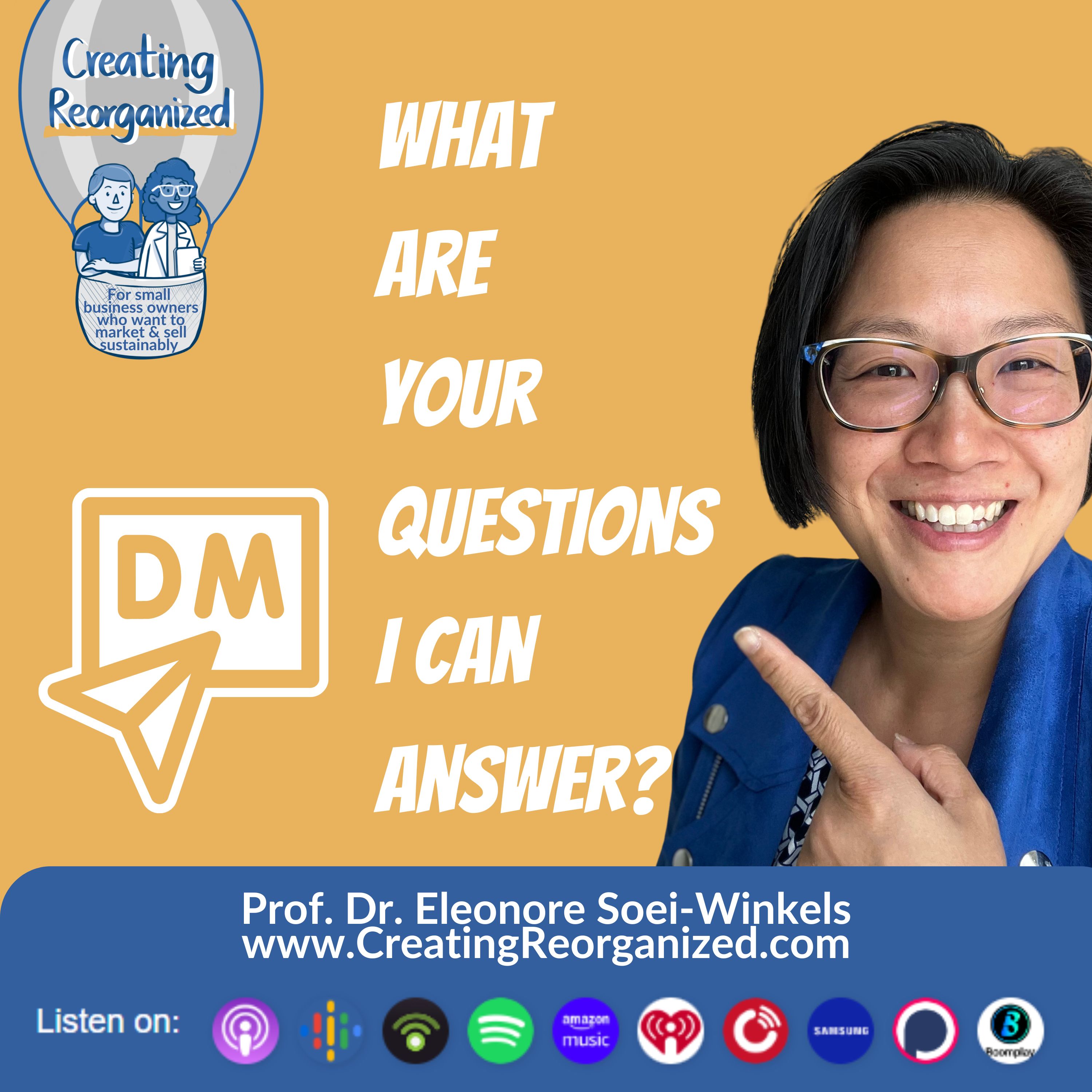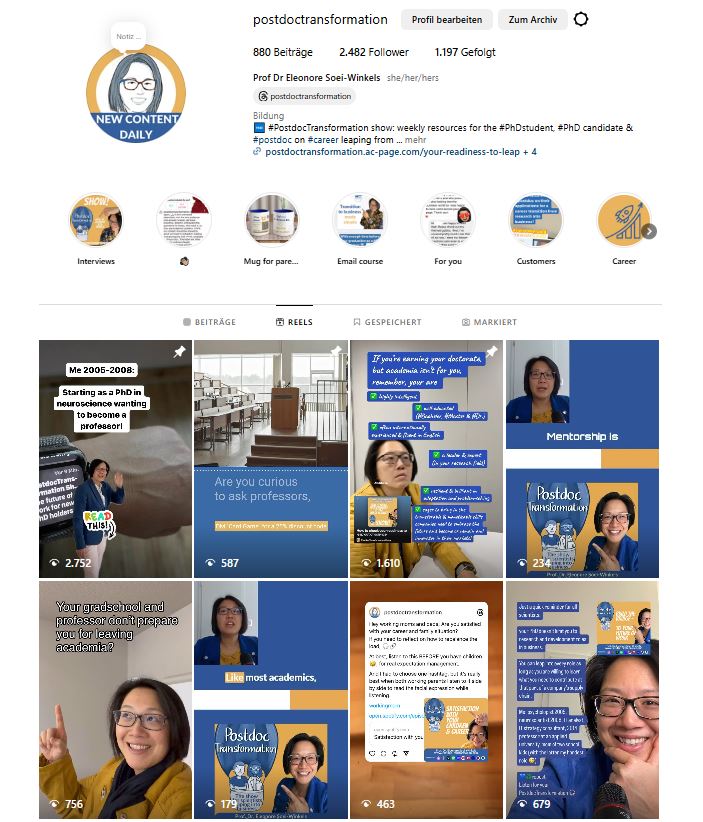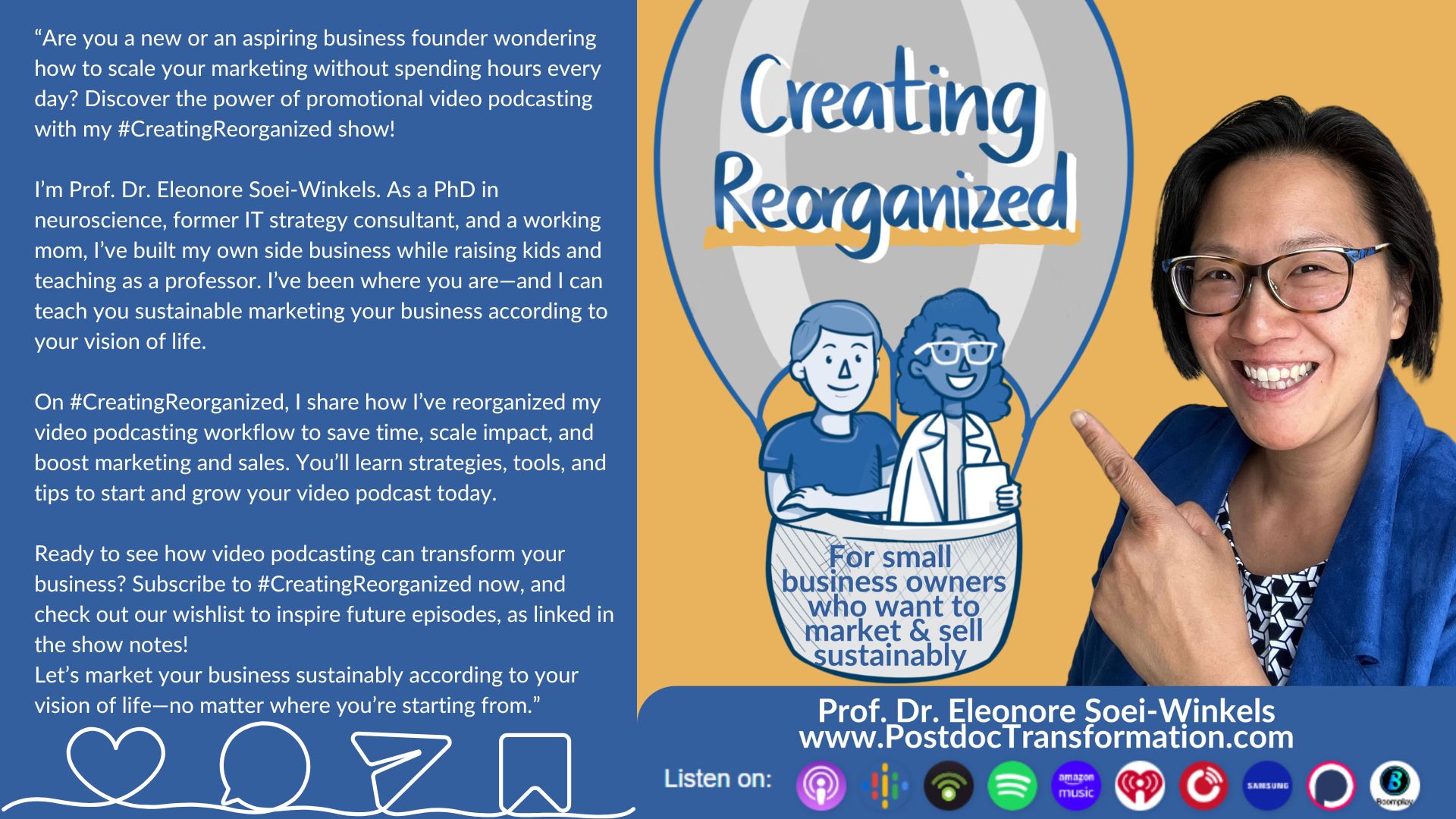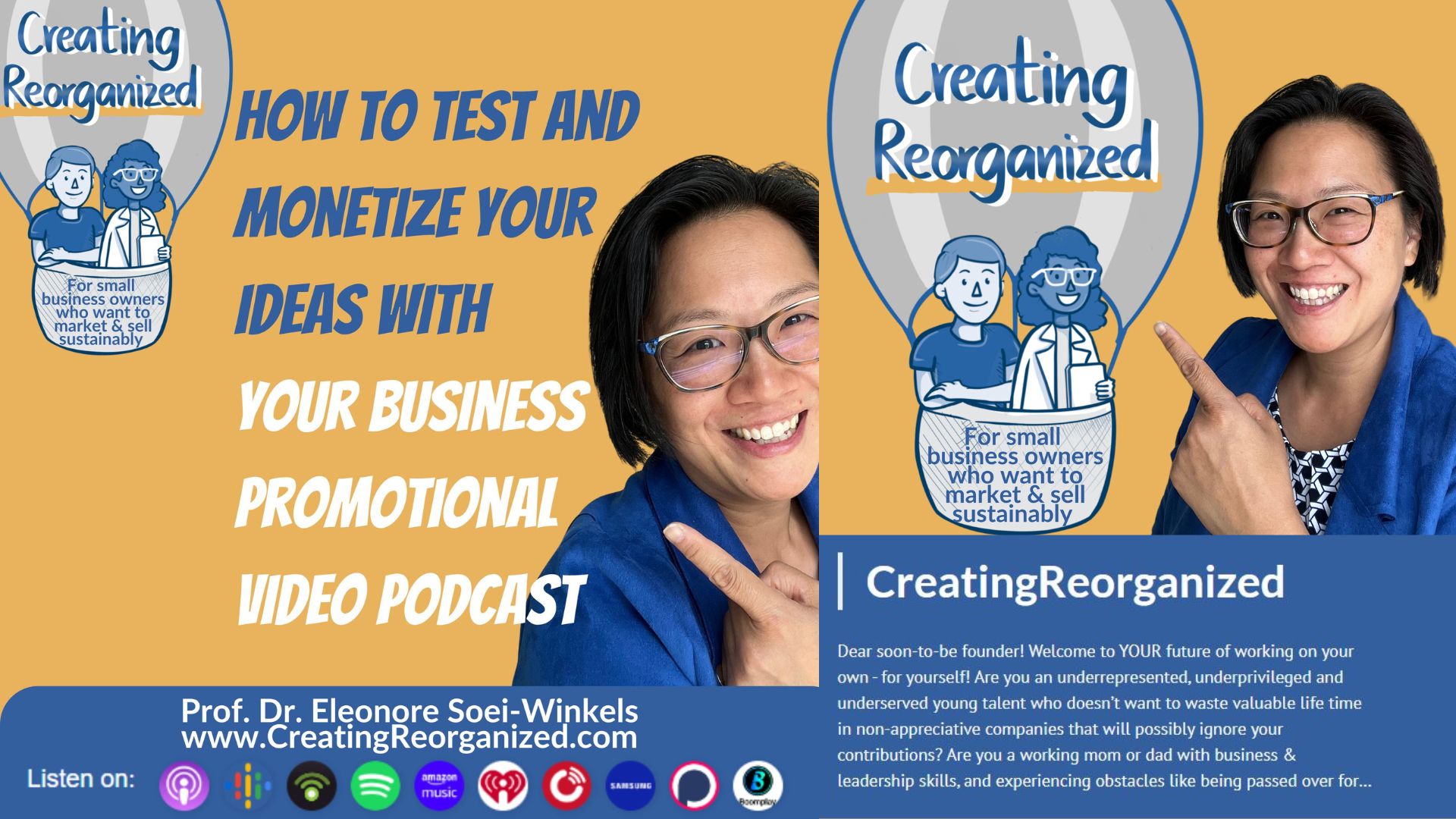
How to test and monetize your ideas with your business promotional video podcast,
CreatingReorganized show
Want to grow your business without the guesswork? In this episode of CreatingReorganized, Prof. Dr. Eleonore Soei-Winkels reveals how your business promotional video podcast can be the ultimate market research tool. Stop wasting time and money on unproven ideas and start building a loyal and engaged community that helps you co-create and test your products and services.
You'll discover a strategic, two-phase blueprint: The Feedback Loop of Fortune and The Co-Creation Engine. Learn how to harness the power of psychological principles like the IKEA Effect and The Principle of Reciprocity to turn audience engagement into actionable, profitable data.
Eleonore shares her own story of pivoting her business and provides a step-by-step guide on how to use tools to listen to your audience, validate your ideas, and launch your next big offer with a pre-sold audience, all without burnout.
This episode is your blueprint for a business promotional video podcast that's not just visible, but provides the return of investment that you deserve.
You’ll learn how to leverage automation tools, social media management, and smart surveys to gather insights, nurture leads, and streamline your content creation—without burning out. The episode guides you through building a feedback loop, co-creating offers with your audience, and launching pre-sales that validate your ideas before you invest.
Eleonore also spotlights her favorite tech stack (Podbean, Descript, TypeForm, ActiveCampaign, Thinkific, and Metricool) and shares her journey of pivoting her business model to serve small business owners like you.
If you want the benefits of a strategic, done-for-you podcasting system—without the hands-on hassle—Eleonore introduces her premium service designed for visionary founders ready to scale.
Tune in to embrace podcasting as your ultimate business asset, and start building a future-proof, client-centered business—one episode at a time.
If you are a new or aspiring founder of your small business and have no time to waste, or really struggle to do your social media marketing, you will enjoy our #CreatingReorganized show!
In my day job as a psychology professor I teach my bachelor and master students in real life, how to reorganize processes in a goal-directed and future-proof way in companies. That’s what I had done for a living as a former IT strategy consultant.
For my own career coaching business on the side, I can only dedicate a fraction of my time – because I prioritize care work for my little children. I face the same or similar challenges like all small business owners. So, I applied all my experience and knowledge to create my other video podcast #PostdocTransformation to streamline my social media marketing and to boost sales of my coaching, e-courses and affiliate products or services.
I strategically capitalize on professional tools to scale my impact according to my vision of life.
Listen and subscribe to this #CreatingReorganized show, so you will learn to do the same for your own business, to build the know, like and trust factor and to boost sales of your services or products!
Please also ask your business-specific questions, because for season 2, I envision interview episodes with aspiring and new founders like you, if you want to get your #CreatingReorganized according to your vision of life!
Dear CreatingReorganizer,
welcome back to the CreatingReorganized show! The video podcast for the savvy small business owner, the visionary founder, the courageous entrepreneur who wants to market their services and products 24/7/365 without burning out.
I am your host, Prof. Dr. Eleonore Soei-Winkels. And today we will dive into market research with our business promotional video podcast. We attract leads, who are engaged as a community and can provide honest feedback for early stage business modeling – so you don’t need to guess and in the worst case, throw your money out of the window.
This is all about something that every business owner, whether you're just starting or you've been in the game for years, secretly fears: Are we just talking to ourselves? Is my idea really brilliant and will I make money with it?
I have a confession to make. It's a confession that cuts right to the core of my own journey, the very DNA of this show. For a while, I thought I had it all figured out. On my other show, PostdocTransformation, where I guide scientists leaping from academia into business—that show is my living lab, my showroom for how to do this video podcasting thing right. I believe I should always be a user of your own services, a living example of how to make things work. I remain teachable, LOL.
And on that show, I was so excited. I decided to interview these brilliant, successful women with PhDs who are now thriving as managing directors and CEOs. These women are my personal heroes. They're underrepresented, they're under-privileged, they've beaten the odds. They're women who have successfully leaped from science into business and are now managing multi-million-euro enterprises. They are trailblazers. They are inspirational. And I thought, "This is gold! My listeners are going to be so inspired. I'm inviting them to sit at the big table with these incredible role models."
I poured my heart and soul into those interviews. I prepared for weeks. The conversations were pure fire. It felt like I was an executive sharing secrets with my audience. It was storytelling from behind the scenes of what true, long-term success looks like. I was so proud. I was giving them what I thought was the ultimate gift.
And then... the numbers came in.
Your analytical data never lies - let your podcasting retention rates and social media comments guide your way
The analytics, that cold, hard data, delivered a punch to the gut. My retention rates for those episodes tanked. Absolutely plummeted from my usual 100% weekly listeners. My audience wasn't resonating with these interviews.
Why? Because I had put my own interests above theirs. While these incredible women were my role models, they weren't yet relatable to my listeners, the PostdocTransformers. My listeners were in the thick of the struggle, figuring out their first steps into business. They needed practical, tactical advice, not inspiration from someone who had already "made it." My audience was screaming, "Give us the how-to, not just the success story!" That was my first confession. The moment I realized I wasn't listening. I was just broadcasting.
But the story goes even deeper, and it's something I’ve seen happening to so many of my business owner friends and clients. A few years ago, the demand for coaching scientists leaping into business surged. It was a clear, ripe market. But then, as it so often happens with trends, the market changed. The well started to dry up.
It wasn't that the need disappeared. It was that the academic world itself had changed. Grad schools, universities, and research institutions finally woke up to the fact that their PhD students needed help with career transitions. So they started upskilling people internally, PhD holders who work in gradschool programs and typically who never went outside of academia, to be their career coaches. Now, those coaches might be good, but they haven't lived the challenges of building a business or working in the private sector. The expertise is different.
Pivoting my business model based on my changing demand as evidenced in my analytics
And for me, this created a profound ethical dilemma. My core audience was now "precarious scientists," living on temporary contracts, with very little disposable income. Taking money from them, when they could get something for free from their institution, felt ethically unacceptable. My business model was in conflict with my values. The well had dried up, not because of a lack of demand, but because of a market change and an ethical conflict. I tried to side with my PostdocTransformers, offering a recurrent 50% commission split for getting me booked at their grad school, but their school had tough budget cuts or delivered a similar service at no additional cost by their internal career counselors.
This led me to a complete reorganization of my business. I had to stop selling to the people I was serving, even though I solve the pain points of scientists leaping into business, because without the return of investment, that business model is not sustainable. That realization was painful, in one season break, I looked at my investment to use my PostdocTransformation show as a business marketing tool to get booked at grad schools. I looked at my return on investment, and at the same time, I looked at my bigger picture. My direct messages on LinkedIn gave me a new direction: Other business owners, seeing what I was doing, were asking me, "Eleonore, how are you building this audience? How are you marketing your services with this video podcast? Could you teach me how to do what you're doing?" Also, all my podcasting tool vendors provided me with an affiliate link to share. And I remembered my old days as an IT strategy consultant, when I trained business people to use software, and how I was able to make them want to buy, what I would teach them. I was able to find the right people for friendly user tests and make them advocates in their corporate setting. So, serving business owners, who want to market their services and products in a sustainable way is a far better match for me.
Let's pause quickly to appreciate those who sponsor this valuable episode.
I want to share with you my best marketing agent, serving my underprivileged, underrepresented, and underserved audience, leads and clients is key for me. As an Asian working mom, business owner, and professor in Germany, I can't be marketing and selling all the time. Like I said already, I'm also very mindful with my own resources.
So, I chose Podbean as my podcasting host and monetizing provider. I'm on the Unlimited Plus plan for our PostdocTransformation and CreatingReorganized shows, and every year I click on renewal, because. Podbean ensures your audience can inclusively listen and watch your podcast according to their visual and auditive needs. You can easily share your podcast on all major podcasting directories, which allows you to reach a huge audience on their favorite devices, no matter where they are. Podbean also has an ads marketplace, so you can attract and manage sponsors for dynamic ads that play based on your audience criteria.
This is a game-changer! It allows you to serve your audience with free, valuable content, and your ad sponsors financially support you independently in each episode. And of course, you'll see insightful stats per demographic, so you can tailor your future episodes and present suitable ads. And here’s a pro tip: find business who offer products and services adjacent to yours, so that you can authentically promote their business to your listeners who may need and want that anyway!
If you want to try out Podbean for your own podcasting, DM or email me "Podbean" so I can share my experience and consult with you. Please check it out via my link in the show notes. I only get a small financial reward if you become their customer using my Podbean link. Thank you for the financial support!
After this quick appreciation of our advertisement, we now return to our valuable episode.
Why I create my CreatingReorganized show (I know, very meta, LOL)
That was the seed for this show, CreatingReorganized, and it's the very foundation of my new business model. I had to pivot completely, to stop selling to one group and start serving another. If you want to think about it from a big picture perspective, check out my business readiness quiz, where I encourage you to think about the pain points of your ideal client avatar, the total addressable market, pricing strategies, operational and delivery models etc. As linked in the show notes.
While this was an example for developing a new business model for a new target group, let’s highlight your ideal clients’ pain points:
The biggest marketing and sales threat in today's world, especially with the explosion of AI-generated content is this: You can have a perfectly crafted script from a large language model, a beautiful AI-generated image, but if it doesn't solve a real-world problem for a real human being, it's just noise. Even if you are searched and found by Agentic AI, the ultimate trust-based buying decision is made by a human, not AI. And your business will become invisible. You risk getting trapped in the very same situation I was in, when I served via interview guest, while my listeners wanted my POV.
Actually, while I say this aloud, there is a huge subtopic of return on investment regarding finding, vetting, preparing, recording, editing and promoting guest interviews vs. solo episodes. If you want that as a future episode, please DM ROI of podcast interviews, so we can put that on our list, or even better, subscribe to our Creating Reorganized newsletter where you will find a form to submit all your questions regarding business promotional video podcasting.
Trapped in the Echo Chamber
So, let's talk about the hero of our story today: you. The small business owner who is busy, cost-sensitive, and wants the absolute best return on every single hour you invest. You're trying to showcase your products and services, but you're afraid you're just shooting in the dark. And guess what, I have actually a dedicated episode on how to best showcase your products and services, if you haven’t listened to it or want to reflect on that from today’s POV, I link to that in the show notes.
You're creating content, you're publishing episodes, but you're not sure if you're hitting the mark. This constant guessing, this feeling of not knowing, leads to burnout, wasted resources, and a quiet, gnawing fear that your unique voice and your incredible value are being lost.
This is what I call The Echo Chamber Effect. You create content based on what you think your audience wants. Your colleagues tell you it's a great idea. Your family is super supportive. And when you ask ChatGPT etc., you get even more cheerleading. You get a few likes on LinkedIn. And you start to believe that your ideas are better than they are. You're just hearing your own thoughts echoing back at you, and you're not getting any real, constructive, honest feedback from the people who actually matter: your potential paying customers. And by the way, here’s my secret on LinkedIn, and I am still on a free plan and I don’t have an affiliate link. But I chose their creator profile and I post weekly a LinkedIn newsletter for both of my shows. And BEFORE I full embraced my CreatingReorganized show, I started a CreatingReorganized LinkedIn newsletter to test my content ideas, and you can connect with me on LinkedIn (I am Eleonore Soei-Winkels) and you can browse though all previous editions. You see, I am building my CreatingReorganized show as a next layer on top of my bite sized tips in each edition.
So, the idea of market research is ingrained in my brain, but I do think, especially in today’s AI age, the written word is cheap and unbelievable in some context. When I show my voice and my face in my communication, it has a human trust-building element, that you need to test your business ideas. Remember, when I said earlier, friendly user or community test? That term is not my term, it’s a well-established market research and IT development concept. Both terms imply, that you need people who genuinely like you, who want to see you win and hence take their time to review, test and give you feedback and support to succeed.
That is why the social media aspect of your business promotional video podcast is so important. I have CreatingReorganizers and PostdocTransformers who like my posts on Instagram, TikTok and LinkedIn. Most of them are not and have not been my students in real life, so I can attribute their effort for my work to my video podcasting.
Podbean: The Distribution Powerhouse & Analytics Engine
I use Podbean for hosting and distribution. This is my ultimate "set-and-forget" tool. I upload my video episode once, and Podbean automatically distributes it to every major podcast platform—Apple, Spotify, Amazon Music, you name it. It's truly a time-saver because I don't have to manually upload my episode to a dozen different places. Only when Spotify changed something on their end, I had to go back in to my Podbean settings. I almost forgot how to do that, because I set that up 2 years ago.
But the real magic lies in their new statistics features. This goes beyond simple numbers of your latest downloads and top episodes. You can see listening trends and engagement rates of your listeners, compare a selected episode to average downloads of last episodes, 7, 14, 30 or 60 days after release. I can see, which episodes were played, re-played and replayed again. For example, if you have an educational show like this one, reflecting the episode may be easier or even different at the second time of listening. It allows me to track the average consumption time of each episode.
Let me give you a specific example of how I use this. I recently saw a significant drop-off in listenership at the 12-minute mark on one of my episodes. I went back to the transcript (which Descript generated, but more on that in a moment!) and realized that's exactly where I had a long, detailed explanation of a complex academic theory without a real-world example. It was too dense. Using that Podbean data, I now know to break up those theoretical segments with a personal story or a quick "aha!" moment. This is how you use data to improve your content and ensure you're getting a true ROI. It’s not about guessing; it's about knowing exactly what content resonates with your audience. And that’s why I have chapter markers to balance more details for the real estate seller vs. general information for all of you.
And here's your actionable prompt: For the existing podcasters, log into your Podbean or podcast hosting platform’s dashboard and identify your three most-listened-to episodes and a point where a significant number of listeners dropped off. For those without a podcast, download the Podbean app and explore a few podcasts in your niche.
You need a convenient, scalable social media presence for market research
If you don’t use social media to engage with your listeners, and most podcast hosting platforms make it really hard for your listeners AND you to engage. And if you now say, OMG, I don’t have time to be active on social media. I know, I get that, and to be short for the sake of my and your train of thought: I use Metricool, and I will pick that up later.
So, to return to “just” publishing your business promotional video podcast on all major podcast players, in the absence of social media activities, your podcast becomes a monologue instead of a dialogue. And let me share, a monologue doesn't build trust, it doesn't boost sales, and it certainly doesn't qualify leads.
What you need is a strategic, doable, and measurable way to turn your video podcast into your ultimate market research lab. You need a system that's scaleable and measurable. And you need a way to do it all without adding another 20 hours of work to your already packed week.
The good news is, a video podcast is the perfect tool for this. It's the ultimate solution to the problem of a shifting market and the threat of AI invisibility. Because a podcast, especially a video podcast, harnesses the power of a fundamental psychological principle: The Mere-Exposure Effect, according to the social psychologist called Prof. Dr. Zajonc, and that should ring a bell for all my students in real life, I will link to it in the show notes. This principle, which has been studied for decades, simply states that the more you're exposed to something, the more you like it. The more familiar you become with a person, a product, or a brand, the more you tend to trust it.
Think about it. When you show up every single week, consistently, with valuable content, your audience sees your face, hears your voice, and experiences your expertise. Over time, that consistency builds an unconscious sense of familiarity and trust. It’s how founders of a small business need a video podcast to build trust and boost sales. You're not just a faceless brand or another AI-generated voice; you are a real person with a real point of view. You become a fixture in their lives, a trusted friend, a helpful guide. And when they need to buy a service or a product in your niche, who do you think they'll go to? The AI-generated ad that popped up once, or the person they feel they know and trust? The one who has been showing up for them, week after week.
Descript: The AI-Powered Editing & Content Repurposing Co-Pilot
Next up is my co-pilot, Descript. This tool is mind-blowing. It's an all-in-one audio and video editor that transcribes your episode automatically. You can edit the audio by editing the text. I used to have to record and save all my host-read ads separately, and it was a real hassle to go back and update them for every episode. But now, Descript's AI makes the rough edits in minutes, which saves me so much time! From this season 2 onwards, I will now update and read my ads fresh for every single episode, so you know this isn't some stale, pre-recorded message. This unique recording makes a huge difference in your listening experience and, honestly, in the conversion rate for my ads, which is key for me and you, as my ads revenues pays some of my podcasting costs, so you can listen to my shows for free.
Descript is my ultimate AI sandbox. Here is a step-by-step look at how I use it to get from raw audio to a full content distribution plan:
Transcription and Filler Word Removal: I record my raw video and audio. Descript’s AI immediately transcribes it. It also automatically identifies all the "ums," "ahs," and stuttered words. I can then remove all of these with a single click. It's like having a professional editor clean up your audio in seconds, without ever touching a single audio wave. In very few exceptions, I will touch the single audio waves, which is also easy, but really seldomly needed.
Generating Show Notes, social media articles posts: I then use Descript's AI to generate a detailed, enganging captions from the cleaned-up transcript. This saves me hours of writing and ensures the show notes are accurate and keyword-rich, which is great for SEO.
Creating 20 plus Social Clips: Here's my favorite part. Once the show notes are done, I use Descript to identify the best, most impactful soundbites or video clips from the episode. To be honest, I use a different tool for the video backdrops to make the branding truly unique to both of my shows. With a few clicks, I can create short, dynamic, animated video clips perfect for Instagram Reels, TikTok, or YouTube Shorts. I can even have the AI generate captions and relevant hashtags. This is how I can create 20 plus for every 45 min episode in under 1 hour.
It's truly a co-pilot that automates all the tedious, repetitive tasks that lead to burnout. This is why I mentioned in Episode 9 that AI should be your co-pilot, not your replacement, as linked in the show notes.
And here's your actionable prompt: Download the Descript free trial, as linked in the show notes. Use your smartphone to record a quick, one-minute video of yourself talking about your business, then upload it to Descript to see the magic of the AI transcription in action. DM me, if you need me to consult you.
If you want to try out Descript for your own podcast editing, DM or email me "Descript" so I can share my experience and consult you. Please check it out via my link in the show notes. I only get a small financial reward if you become their customer using my Descript link. Thank you for the financial support!
And now, let’s get back to our inspiring CreatingReorganized episode!
Win your ideal customers by sharing your why!
And do you know what information will boost your listener’s trust? When you share with them your why! If you want to re-visit your Why, please listen to our episode: Why founders of a small business need a video podcast to build trust and boost sales, as linked in the show notes.
What you need is a strategic, doable, and measurable way to turn your video podcast into your ultimate market research lab. You need a system that's scaleable and measurable. And you need a way to do it all without adding another 20 hours of work to your already packed week.
I'm here to show you exactly how to do that. The first step is to stop broadcasting and start listening. Your video podcast is not just a stage for your ideas; it’s a living lab. It's time to turn your audience from passive listeners into your most valuable business partners.
To get the free lead magnet, listeners click a link in the show notes, and they land on a conversational form created with Typeform. What I love about Typeform is that it feels so human and conversational. It's a great user experience that makes people feel seen and heard, not just like another entry on a spreadsheet.
Their new AI feature can provide real-time answers to common questions within the form itself, making it a smoother experience for your potential lead. My quiz, "Check your readiness to leap out of science," is a perfect example of this. I wrote the questions to feel like a one-on-one conversation.
If you want to try out Typeform for your own lead generation and qualification, DM or email me "Typeform" so I can share my experience and consult you. Please check it out via my link in the show notes. I only get a small financial reward if you become their customer using my Typeform link.
The 4 step - feedback loop
This is where my story becomes your roadmap. My background in industrial and occupational psychology, and my years as an IT strategy consultant at Accenture, have taught me one undeniable truth: systems are what save you from burnout. And my own entrepreneurial journey has shown me that the best systems aren't the most complex ones; they're the ones that make your business smarter, not just busier. They're the ones that harness technology to automate the mundane and free you up for the visionary work.
And just in case you haven’t noticed, I love storytelling, that is literally my Spotify podcaster persona in 2024, LOL and I will put the screenshot on my show notes, LOL. If you need a reminder about why storytelling wins, listen to our CreatingREorganized episode Storytelling from behind the scenes for engaging your leads, as linked in the show notes.
So, let's turn our attention to the actionable plan. This isn't just theory, it's a blueprint for building a resilient, AI-resistant business. The plan has two simple, yet powerful, phases. The first is what I call The Feedback Loop of Fortune. It's about using your video podcast to actively listen to your audience and turn every single episode into a data-gathering opportunity. The second is about using that data to Co-Create your next product or service, so it’s essentially pre-sold before you even launch.
Today, we're diving deep into Phase 1, the Feedback Loop. And the psychological principle that underpins this entire strategy is The Principle of Reciprocity. It's a fundamental aspect of human psychology, and you see it at play in every successful relationship, both personal and professional. It’s simple: when you give something of value, people feel a natural, unconscious pull to give something back in return. For us, the value we give is the free, insightful content in our video podcast. We show up every week, we provide real solutions to real problems, we share our expertise, and we give it all away. In return, we get the most valuable currency in business: our audience's attention, their engagement, and their honest feedback. We are building a client network with our business promotional video podcast by giving, not just by selling.
So, let's get into the nitty-gritty of how to set up this system for yourself.
